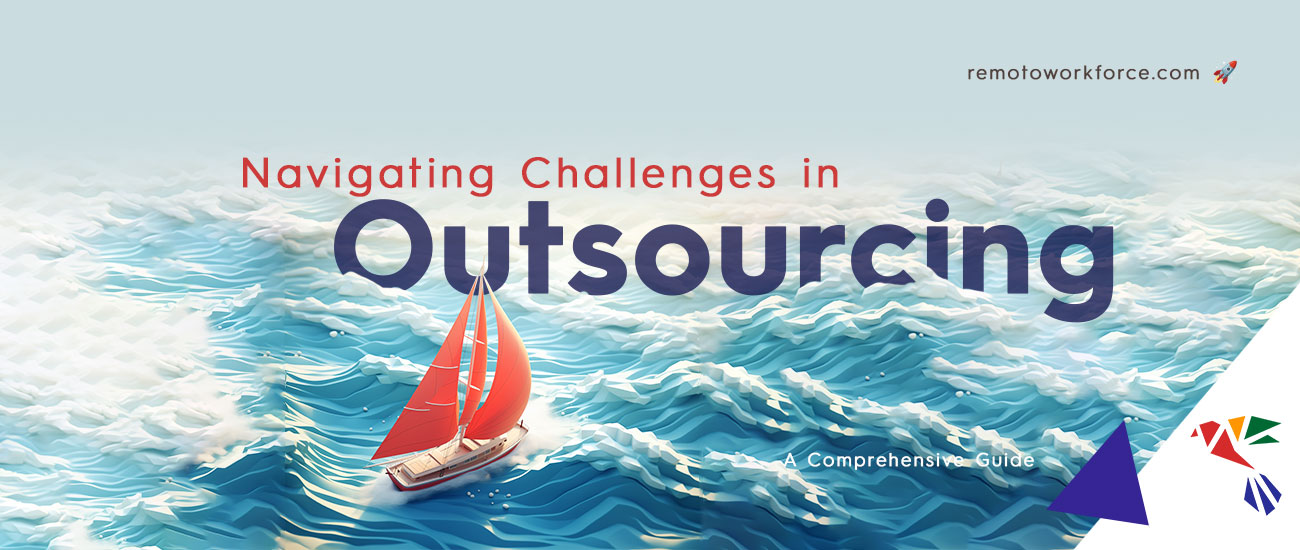Outsourcing is an integral strategy for companies wanting to streamline operations, reduce costs, and access specialized expertise. However, while outsourcing offers many benefits, it also presents challenges. These challenges can impact the success of an outsourcing partnership.
To navigate these complexities, you need to adopt a proactive approach that addresses these challenges head-on. This blog post provides you with practical insights and strategies to help you overcome these obstacles and foster successful outsourcing relationships.
Assessing compatibility: Matching company culture and values
At the heart of a successful outsourcing partnership lies compatibility. Compatibility goes beyond mere technical expertise and encompasses a deeper alignment of company culture, values, and work ethics.
When you start using outsourcing, you should carefully look at shared values and how they work. This way, you can make sure that everything works well together and that people can work together happily. This compatibility assessment forms the cornerstone of a successful outsourcing endeavor.
Potential cultural differences can significantly impact communication, decision-making, and work practices. It’s crucial for you to acknowledge and understand these differences to bridge gaps and foster effective collaboration.
Conducting thorough research on the outsourcing company’s reputation, industry standing, and client feedback provides you with valuable insights into their culture and work style. This research empowers your business to make informed decisions and select partners that align with your own values and objectives.
Open communication and setting clear expectations are paramount to a successful outsourcing partnership. Having early meetings or calls helps your partner understand what your needs are. You can talk about shared goals and what you expect from the partnership.
If you want to deepen your understanding of outsourcing, watch this video!
Communication strategies: bridging language and cultural barriers
One of the biggest challenges in outsourcing is the potential for miscommunication due to language and cultural differences.
To overcome this challenge, it’s crucial to establish clear communication protocols and guidelines. This includes setting expectations for the frequency and method of communication, such as daily or weekly check-ins, phone calls, or video conferences.
Regular team-building activities and online meetings can also help overcome language and cultural differences. They help team members feel closer and understand each other better. These activities can include virtual coffee breaks, trivia games, or even online cooking classes.
Additionally, providing language training and cultural sensitivity workshops can help team members develop the skills needed to communicate effectively across cultures.
Encouraging open communication and feedback is another important strategy for mitigating communication challenges. This can be done through regular surveys, one-on-one conversations, or feedback sessions.
By actively listening to team members’ concerns, companies can identify and address communication issues early on and promote a positive working environment.
Managing time zones: Aligning schedules for optimal collaboration
When outsourcing, managing time zones is crucial for ensuring effective collaboration and productivity across geographically dispersed teams.
Here are some tips for aligning schedules and optimizing collaboration:
- Identify core working hours: Determine the overlapping working hours between your company and the outsourced team. This will help you establish a common time frame for synchronous communication and collaboration.
- Create a communication schedule: Establish a clear schedule for regular communication, such as daily or weekly check-ins, team meetings, and project updates. Make sure that these times work for both teams, considering their respective time zones.
- Use technology: Leverage technology to facilitate communication and collaboration across time zones. Video conferencing, instant messaging, project management tools, and shared document platforms can help bridge the distance and enable real-time interaction.
- Encourage flexibility: Whenever possible, allow for some flexibility in working hours to accommodate team members in different time zones. This can foster a sense of work-life balance and increase employee satisfaction.
- Document processes and procedures: Develop clear and detailed documentation outlining processes, procedures, and expectations. This will guarantee that team members have the information they need to complete their tasks effectively, even when working in different time zones.
- Cultivate a Culture of Trust: Build a culture of trust and mutual respect within the team. Encourage open communication and collaboration, and foster an environment where team members feel comfortable asking questions and seeking assistance.
- Consider cultural differences: Be mindful of cultural differences that may impact communication and collaboration across time zones. Different cultures have varying norms for communication styles, punctuality, and work-life balance. Understanding and respecting these differences can help prevent misunderstandings and miscommunication.
- Regular Performance Reviews: Conduct regular performance reviews to assess the effectiveness of the outsourcing arrangement and identify areas for improvement. This will help ensure that the partnership remains mutually beneficial and aligned with your business goals.
Data security: Ensuring sensitive information remains protected
Data security is paramount when outsourcing, as sensitive information is often shared and processed. To ensure your data remains protected, several measures must be taken.
Firstly, implementing robust encryption methods is crucial. Data should be encrypted both at rest and in transit to prevent unauthorized access. Encryption algorithms such as AES-256 or RSA should be used to safeguard sensitive information.
Additionally, access controls should be strictly enforced, granting access to authorized personnel only. Two-factor authentication (2FA) should be mandatory to add an extra layer of security.
Regular security audits should be conducted to identify vulnerabilities and ensure compliance with industry standards. These audits should assess the security of systems, networks, and processes and identify any gaps or weaknesses.
Moreover, strict adherence to data protection regulations and compliance frameworks, such as GDPR or HIPAA, is essential. This involves understanding and meeting the specific data protection requirements of the industry and jurisdiction in which the company operates.
To mitigate the risk of data breaches, a comprehensive data breach response plan should be in place. This plan should outline the steps to be taken in the event of a security incident, including containment, eradication, and recovery.
Regular training and awareness programs should be conducted for employees to educate them about data security best practices and potential threats.
By implementing these measures, your company can significantly reduce the risk of data breaches and protect sensitive information when outsourcing. A proactive approach to data security ensures the trust and confidence of customers, partners, and stakeholders, ultimately contributing to the long-term success of the business.
Outsourcing can be a powerful strategy for enhancing operational efficiency and accessing specialized expertise. However, it requires careful planning and proactive management to overcome potential challenges.
By focusing on compatibility, clear communication, time zone management, and robust data security measures, you can navigate these complexities and build successful outsourcing partnerships.
With the right approach, your business can leverage the full benefits of outsourcing, driving growth and achieving its strategic goals.













